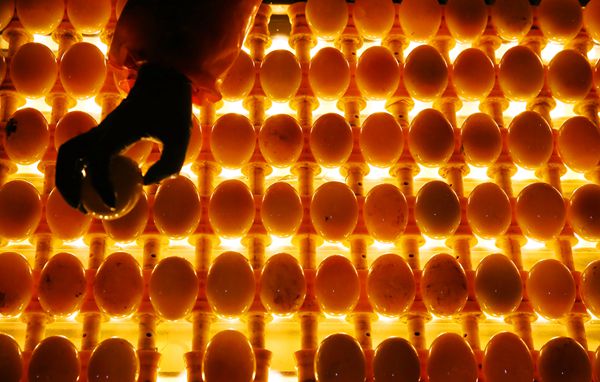 |
|
[Photo by Xu Congjun/Wen Qixin/Wang Haibin for China Daily] |
It's not a riddle, it's an ancient, somewhat misunderstood Asian delicacy.
A long time ago, on a smallholding in the rich Jiangnan farmlands, a farmer went about his early morning egg-collecting chores. As he sought out the nooks and crannies on the farm, he suddenly discovered a well hidden nest where the mother duck had obviously been brooding.
Curious, the farmer went nearer and examined the eggs. They seemed to be all fertilized, and he decided a new brood of ducklings was definitely on the way. There were too many eggs in the nest, so he decided to remove a few, with the vague idea of getting another duck to incubate them.
As he walked back, he could have accidentally dropped an egg. It cracked but did not break.
It was nearing lunchtime, and so rather than waste the egg, the farmer's wife cooked it in the rice pot.
That could well be how the first maojidan, or "egg with fur", came about. A more elegant name is huozhuzi, or "living pearl". And these delicacies have been enjoyed in Southern China for as long as we can remember.
It is both egg, and meat since the embryo is half developed in the egg and the little bird is starting to form around the egg yolk.
When the southern Chinese emigrated to surrounding Southeast Asia, they brought this portable, nutritious snack along on the journeys. It took root best in the Philippines where it became known as balut. Vietnam sells these as popular street food, too, and calls them trunk vit lon. In Thailand, Cambodia and Laos, they are also commonly eaten.
From the first accidental discovery, the production of these embryonic snacks has come a long way.
Fertilized chicken or duck eggs can be used, but duck eggs are preferred since they are larger, and the meat and broth are tastier.